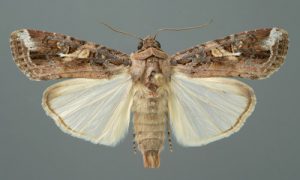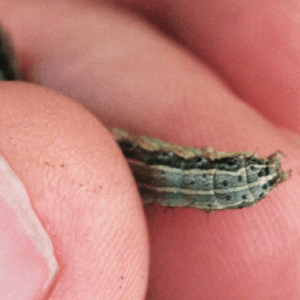“Cool, wet springs followed by warm, humid weather in the overwintering areas favor survival and reproduction of fall armyworm, allowing it to escape suppression by natural enemies.”
Sound like 2019?
“Weeds known to serve as hosts include bentgrass, Agrostis sp.; crabgrass, Digitaria spp.; Johnson grass, Sorghum halepense; morning glory, Ipomoea spp.; nutsedge, Cyperus spp.; pigweed,Amaranthus spp.; and sandspur, Cenchrus tribuloides.”
Who has NOT seen nutsedge explode this year?
What are the ideal conditions?

We are experiencing some perfect conditions for the armyworm and many have been seeing the results of their wrath. Usually, in our area, it is thought of as mostly being a hay producer’s issue. Lush, well-fertilized grass is particularly attractive to egg-laying moths, so infestations are common in well-managed bermudagrass hay fields. Fall armyworms will eat other types of forage grass, but infestations are much less common in bahiagrass. Fields with dense canopies and vigorous plant growth are more susceptible than less intensely fertilized and managed fields.
How do you deal with the armyworms?
One option for dealing with an infestation of fall armyworms in hay fields is to just go ahead and cut the field. The armyworms will die from exposure to the high soil surface temperatures that occur after harvest. This is a good choice if the field is nearly ready to cut anyway and the forecast promises good hay-curing weather. This is where round-bale hayl

age can be your best friend since the weather doesn’t have to be AS ideal. If there are a lot of big caterpillars, they will “cut the field” for you in another couple of days. If you decide to go ahead and cut the field, you need to do it that day or the next morning. Treatment should be considered when populations exceed three to four larvae per square foot.
Insecticides vary in price; grazing and harvesting intervals; mode of action; speed of action; and safety to the environment and to the applicator. The insecticide label usually recommends a range of application rates. In general, use higher rates of insecticides (and higher volumes of water) when the grass is thick, when fall armyworm populations are high, when caterpillars are large, and to get the longest residual effect. Some insecticides will kill only smaller caterpillars, so check the comments about each insecticide. Pay close attention to the number of times a particular insecticide can be applied per hay cutting and per season. Within a season, rotate between different modes of action, if possible.
What are the insecticide options?
Insecticide choices available include pyrethroid insecticides (Mustang Max, Baythroid, and Karate), as well as Blackhawk and Coragen and the insect growth disruptors Intrepid and Dimilin. Note that many insecticides are restricted-use products, which means you must have a current pesticide applicator certification card to buy and use them. If you have significant acreage, it is worth the time and effort to get this. The primary reason for the restricted use classification is because of buffer zones along streams and around other bodies of water. See labels for specific details.
In general, the growth-disruptor products (Intrepid and Dimilin) provide longer control than the pyrethroids (Mustang Max, Baythroid, and Karate). But growth regulators are slower-acting and best used when caterpillars are small. Few treatments will provide more than about 2 weeks of control because rapidly growing grass results in new, untreated leaf area and dilutes insecticide residues. Residual control may be shorter during heavy outbreaks or following frequent or heavy rainfall.
Unfortunately, the rapid grass-growing conditions that can provide a vast amount of stockpiled forage can also be rapidly taken away by this pest.
Armyworms-Mississippi State University
Management of Armyworms in Pasture
2019 Insect Management Guide for Pasture
 0
0
